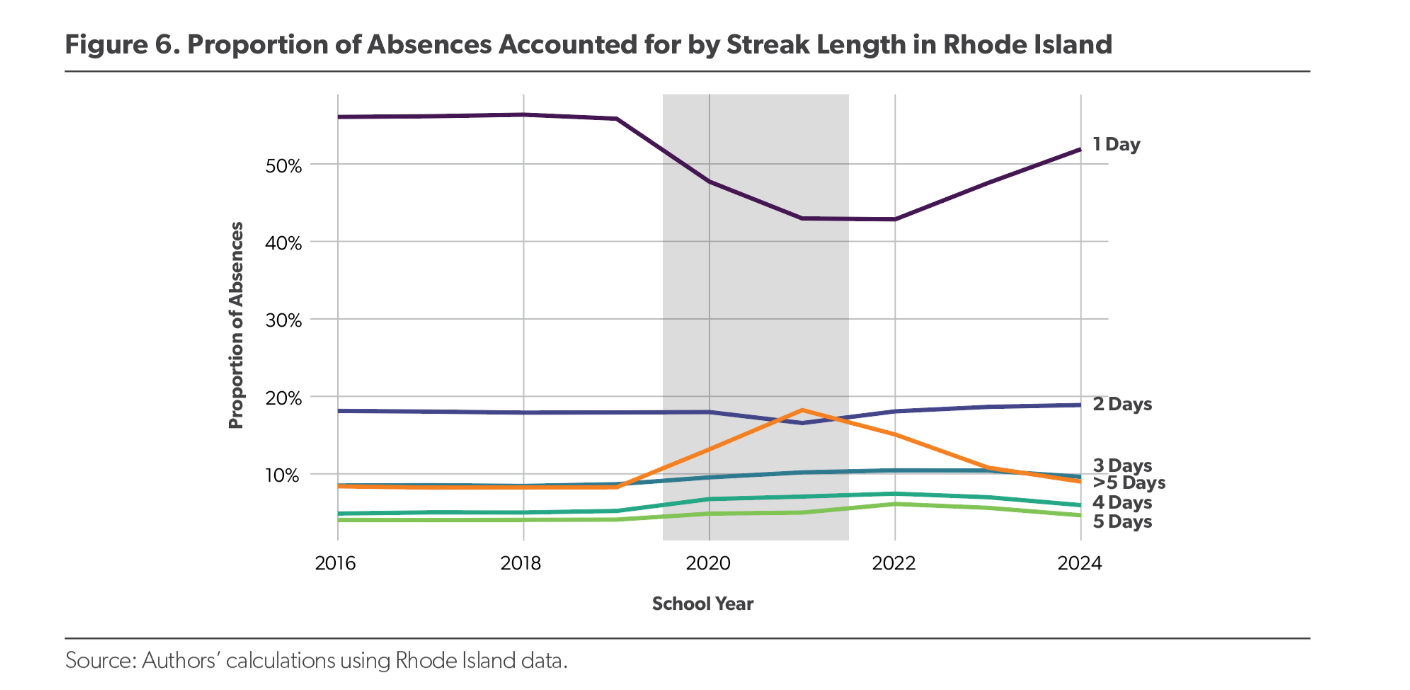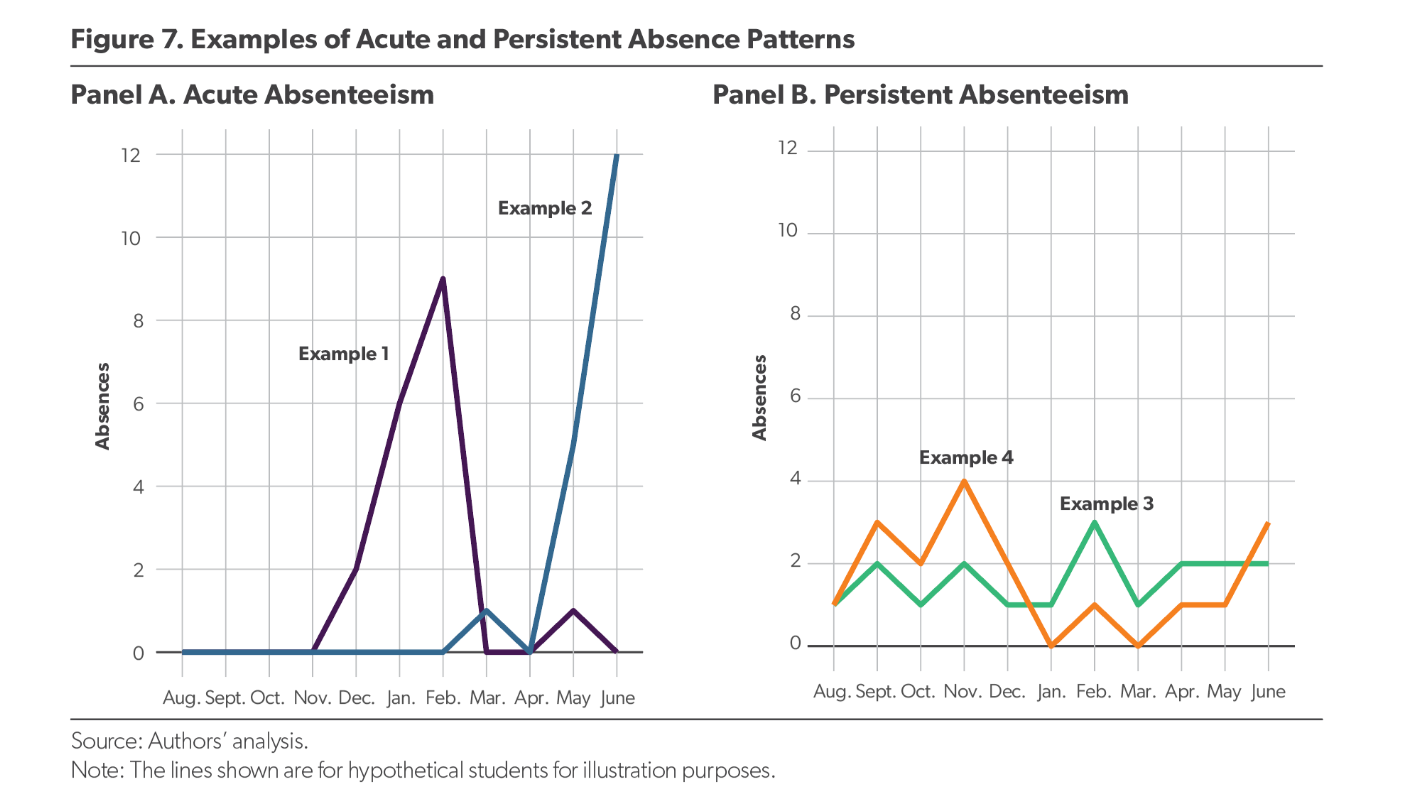What the Research Says About Fall Attendance and High Impact Steps to Take Now

With spooky season behind us and the holiday season ahead, you may be noticing new dips in attendance. Could it be the Fall Slide?
At our recent monthly webinar for district partners, we explored new research from the American Enterprise Institute (AEI) about common attendance patterns and shared practical strategies to identify and address those emerging right now. By strategically surfacing and addressing attendance patterns, early intervention today can pay dividends in steering students back on track for better attendance this year. Read on for some key takeaways.
The Fall Slide Is Not New
A recent study from AEI, What Stories Does Daily Attendance Tell? Student Attendance Patterns Before and After the COVID-19 Pandemic analyzed multiple years of student-level attendance data. One of the most striking findings: the attendance dip we often talk about in the spring also happens in the fall—and it always has.
Before the pandemic, absenteeism consistently spiked around:
- Thanksgiving break
- Winter break
- Spring holidays
These seasonal dips became sharper during the pandemic, but they weren’t a unique Covid side effect. What’s changed is awareness and scale.
Why it matters:
While many of us have taken a sharp focus on spring “re-engagement,” fall patterns are just as significant, and often overlooked. Getting ahead of these dips now can prevent students from drifting into chronic absenteeism by January.
Single-Day Absences Drive More Lost Instruction Than Long Streaks
Many educators report concerns about week-long vacations or multi-week trips. But the AEI research shows that one-day absences make up the majority of missed school.

While long streaks are disruptive, they account for a much smaller share of overall absenteeism. The bigger impact comes from repeated single-day absences, especially when they fall on Mondays and Fridays, a pattern known as “weekend extenders.”
What this means for practice:
Don’t focus solely on students taking long vacations—early and widespread intervention can mean recovering more days of learning.
Acute vs. Persistent Absence Requires Different Responses
Students who miss school in consecutive bursts are not the same as students who miss a few days every month. Even if both groups end the year with the same total absences, the underlying causes—and the supports they need—are different.
- Acute absences may be tied to temporary issues (illness, family travel, emergencies).
- Persistent absences signal ongoing barriers (transportation challenges, disengagement, mental health needs, family routines).

How to address these patterns? Short term communication and catch-up support can help ameliorate those acute dips around the holidays, and structured Tier 2 supports and ongoing family partnerships can help bring down those persistent absences.
Effective attendance work means tailoring response plans to patterns—not just percentages. But, focusing on a single pattern alone won’t cut it. Which brings us to our next point.
Focused, Layered Campaigns Make a Bigger Difference Than Single Initiatives
Because each attendance pattern reflects a small share of total absences, targeting just one won’t meaningfully reduce chronic absenteeism. But multiple small, well-timed interventions and campaigns add up. These could include:
- A messaging campaign ahead of Thanksgiving
- A Tier 2 group intervention for Monday/Friday “weekend extenders”
- A positive reinforcement effort tracking consecutive days attended
A perfect example comes from a Thanksgiving Break Campaign that we implemented with one of our district partners, sending out text messages the Friday before Thanksgiving week to reinforce the importance of attending on Monday & Tuesday as well as the Wednesday right before Thanksgiving to encourage return immediately after break. These texts were complemented by ongoing classroom and school-wide attendance incentives
What happened?
- Up to 5 percentage point improvements in attendance
- ~350 more students attending per day before and after break
- Gains replicated across winter and spring holiday periods
These layered supports reinforced consistent attendance culture without overwhelming staff capacity, proving that a few well-timed reminders and motivation can prevent many students from slipping into chronic absenteeism.
What’s Next for Your Attendance Work?
It’s prime time to proactively target known dip days. Focus first on:
- The Monday and Tuesday before Thanksgiving break
- The days returning from Thanksgiving
- The Friday before winter break
If you already have those covered, next look at:
- The return from winter break
- MLK weekend
- President’s Day weekend
- Weeks leading into spring break
As you build your campaigns, you may find our Campaign Checklist helpful, as well as the following tips:
Anticipate & Personalize Outreach
- Look at last year’s individual absence patterns
- Identify students most likely to miss before/after breaks
- Send supportive reminders 2–3 weeks in advance (not just the week of)
Run Motivating, Visible Attendance Challenges
- Grade-level competitions
- Seasonal attendance raffles
- Classroom shout-outs
- Hot chocolate days, popcorn parties, student showcases
Partner With Families to Reduce Barriers
- Communicate empathy first- especially given the current economic strain
- Help connect to food and financial resources
- Make school a supportive place, not a compliance checkpoint
The Everyday Labs platform makes it easier to uncover and respond to emerging trends, including Seasonal Absences, Monthly Trends, and even automatically identifies pattern types, including weekend extenders and day of the week absences. Additionally, when you partner with EveryDay Labs, our team helps support your targeted campaigns that will help get students back on track.
Click here for a guided tour.
Join Our Community of Learners
Stay updated with our latest insights and share your thoughts with fellow educators and parents.




